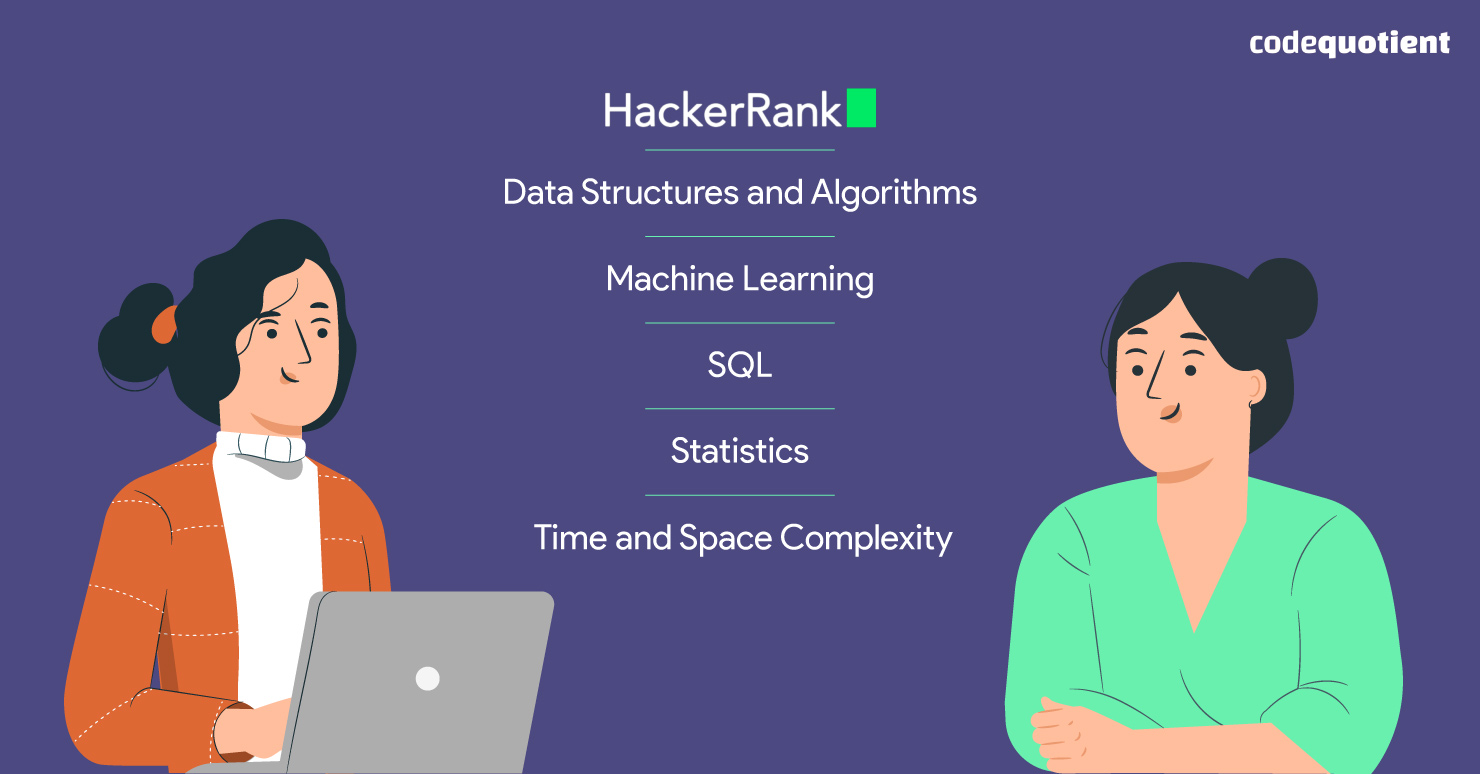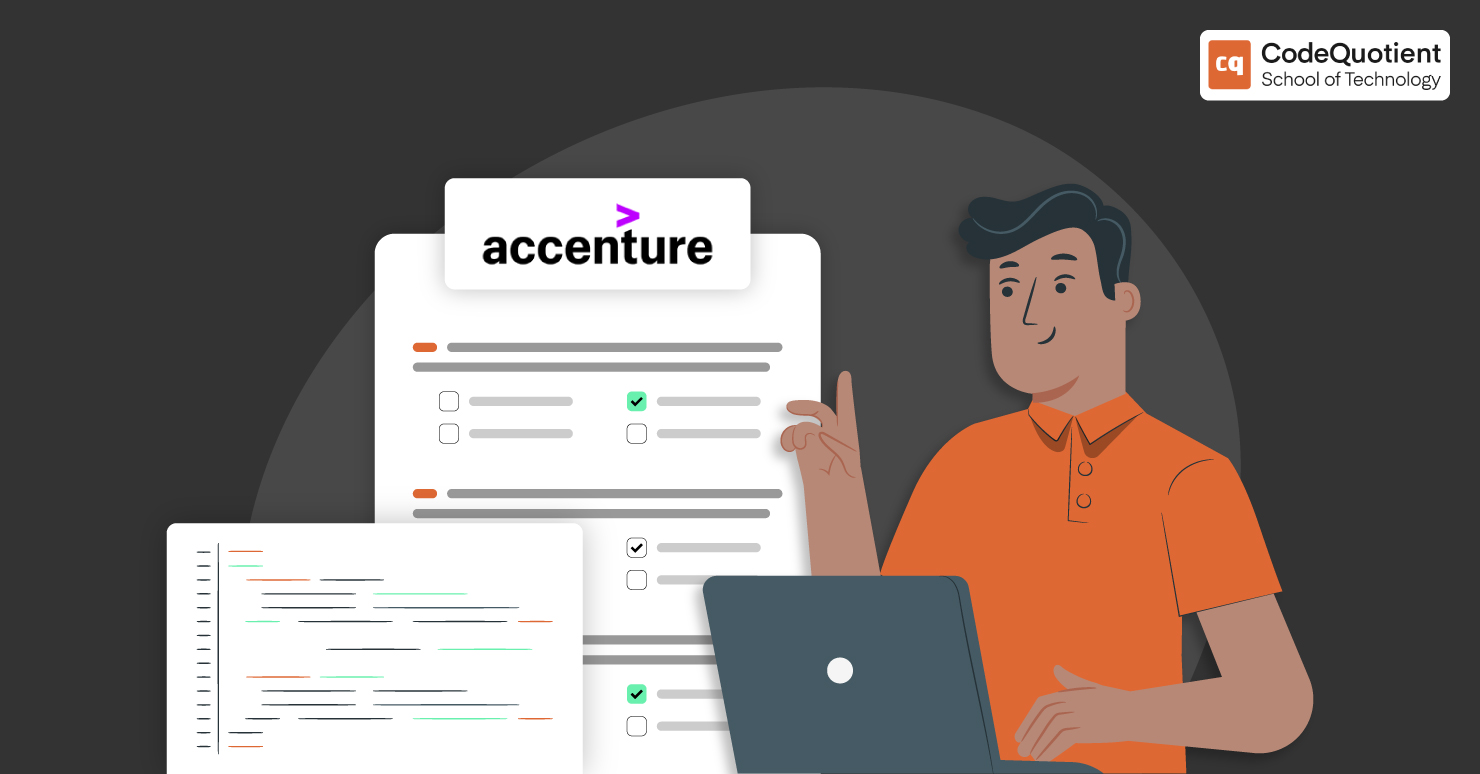Data science has established itself as one of the most in-demand career streams in recent years. Because many organisations are looking to leverage data’s power to drive decision-making and business growth.
As a result, competition for data science roles is fierce. Therefore, job applicants need to be well-prepared for the interview process.
HackerRank is one of the most popular tools for preparing for data science interviews. The platform provides various coding challenges and problems commonly asked in tech interviews.
In this article, we’ll look at some of the most common HackerRank questions that typically come up in data science interviews so that you can have the finest approach.
What is Data Science?
Data Science is a field that combines statistical and computational methods to develop data-based insights and knowledge. It involves collecting, cleaning, analysing, and interpreting data, as well as the development of predictive models and algorithms. This domain of study aims to uncover hidden patterns and relationships in data and use these insights to support decision-making and drive action.
Data science is interdisciplinary, drawing on elements of computer science, mathematics, and domain-specific knowledge. It is widely applied across various industries, from finance and healthcare to retail and marketing.
5 Crucial HackerRank Questions Featured in Data Science Interviews

Now let’s explore the that usually get asked in an interview.
1. Data Structures and Algorithms
Data structures and algorithms form the foundation of computer science and are essential for solving complex problems efficiently and effectively.
In data science interviews, you may be asked to implement common data structures, such as arrays, linked lists, stacks, and queues, as well as algorithms, such as search and sort algorithms, dynamic programming, and graph algorithms.
Example: Sort an extensive array of numbers in ascending or descending order.
Solution: The quicksort, a divide-and-conquer algorithm, can be used here as it partitions the array into two sub-arrays and then recursively sorts each sub-array.
2. Machine Learning
Machine learning is a subfield of artificial intelligence that involves developing algorithms to learn from and make predictions on data.
Based on Python, You may be asked some HackerRank questions to deploy linear regression, k-nearest neighbours, decision trees, and neural networks or to answer questions about the strengths and weaknesses of different algorithms.
Example: Build a predictive model to classify whether a given email is spam.
Solution: Utilizing logistic regression, which models the probability of an email being spam based on the words and phrases it contains.
3. SQL
SQL (Structured Query Language) is the standard language for managing relational databases and is widely used in data science for retrieving, storing, and manipulating data.
You may be asked HackerRank questions to write SQL queries to extract information from a database or to perform operations such as aggregations, joins, and subqueries.
Example: Calculate the average salary of employees in a company by the department.
Solution: Write a SQL query that joins two tables, one containing employee information and the other containing department information, and then aggregates the salary data by department using a group by clause.
4. Statistics
Statistics is a branch of mathematics that deals with data collection, analysis, interpretation, and presentation.
Candidate may be asked HackerRank questions to perform statistical analysis, such as hypothesis testing, regression analysis, or time series analysis, or to answer questions about statistical concepts, such as normal distribution, variance, and covariance.
Example: Test the mean difference between two populations, which can be solved using a two-sample t-test.
Solution: Calculate the means, standard deviations, and sample sizes of both populations, and then use these values to calculate a t-statistic and a p-value. If the p-value is less than a chosen significance level, such as 0.05, you would reject the null hypothesis that the means are equal and conclude that there is evidence of a difference between the populations.
5. Time and space complexity
Time and space complexity describes the amount of time and memory required to solve a problem as the size of the input data increases.
Example: Find the closest pair of points in a two-dimensional space, which can be solved using a divide-and-conquer algorithm.
Solution: First, sort the points by their x-coordinate, then recursively divide them into two halves and solve the subproblems. The time complexity of this algorithm is O(n log n), and the space complexity is O(n), as it requires a sorting algorithm and a recursive call stack.
In Summary
The interview process for data science roles is competitive, and applicants must be well-prepared to demonstrate their skills and knowledge.
HackerRank is a helpful platform for preparing for data science interviews, as it provides a wide range of coding challenges and problems commonly asked in tech interviews.
By focusing on the most common HackerRank questions in critical areas discussed above, you can improve your chances of success in the interview process and take a step closer to securing a fulfilling career in data science.
However, personalised mentorship and resources will ironclad your preparation.
CodeQuotient: Your Mentor for the Finest Preparation
If you are a fresher, an experienced professional, or simply an avid learner, the career platform CodeQuotient offers their industry-renowned SuperCoders Program. It is a three-month-long, full-stack development course focusing on project-based learning to help you become a highly skilled programmer and boost your career!
To get started, contact us today!




